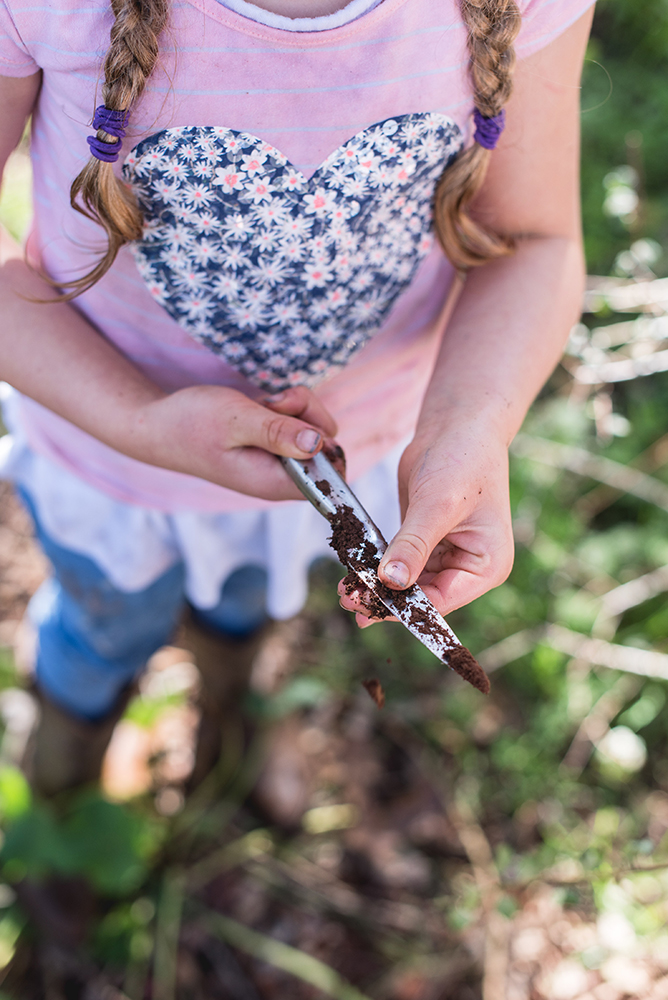Children of all ages can create a small-scale garden and wildlife habitat in the yard. Learning about native plants introduces kids to botany and entomology and how they relate to the environment. Plus… bugs and flowers are cool!
Grown ups can help to:
Take Ownership of the Space
What type of garden would they like to build? A pollinator garden? One that attracts certain birds or insects? Perhaps they want to create a garden just for flowers. You’ll need to help them choose the right plants or garden scapes for these goals.
Where is the designated area for the garden? Where the garden is located on the property will dictate what types of plants can be planted. Take into account the amount of sun an area gets. Is it easy to get water to that space?
It’s possible you’ll want to include seating near the garden or provide padding for the child to use as they’re observing.
Don’t go too big, you can always expand if needed! Mark off the garden area with rocks, a small fence, or even pieces of wood. Try to choose an area that has space for the garden to grow as it becomes more successful.
Have the child personalize the garden. Painted rocks, personalized signs, flagstones, and birdhouses can all give the garden a personal touch that helps the child feel like the garden truly belongs to them.
Look around your favorite neighborhood native gardens (like Twelve Hills Nature Center!) to draw inspiration.

Photo by Sean Malone
Foster a Love of Learning
You can help your child learn about actions and consequences. What happens if there’s too much water? Or not enough?
How do you start plants from seeds? Seedlings offer immediate gratification, and sprouting seeds gives a sense of accomplishment.
Are there new insects or birds in the yard now that the new garden is planted? If the child is old enough to write, they could keep a diary of insects and animals that visit the garden.
Let younger kids feel all the different textures of leaves and petals.

Engage the Senses
Plant a variety of native flowers and grasses for extra scents and textures. Waxy yuccas and feathery pincushions make for interesting contrasts.
Plants aren’t the only thing that can provide texture and stimulation. Water features, rocks, bits of log all provide different textures, and even attract different insects and animals, as well as provide cover for them.
Observe the garden in the morning, the afternoon, and near dusk. Is the experience different depending on the time of day?
What You’ll Need
- A plot of land for the garden
- Decorations for personalizing the garden
- A plan for the type of garden you are planting. You can find a list of native blackland prairie plants here. If you’re not in the Dallas area, you can search for your ecoregion and find a list of native plants
- Trowels, soil knives, rakes, etc.
- Pots for starting seeds
- A garden notebook/diary
- A hand lens for looking at insects and plants up close
- Gardening gloves
- Don’t forget the sunscreen!
Learn More
Visit Twelve Hills Nature Center and check our events and activities calendar for nature walks.

